When Can I Move My Baby to a Crib?
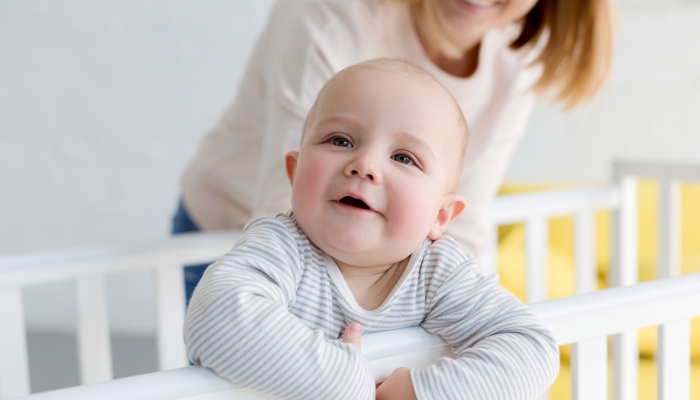
- Most babies are ready to transition from their bassinet to a crib between three and six months.
- Bassinet weight limits, your baby’s gross motor development, and your baby’s age are all indicators of when to transition your baby to a crib.
- Help your baby sleep soundly in their crib by making a gradual transition and sticking to a familiar routine.
- Plan to sleep in the same room as your baby until they are at least six months old.
As with many decisions in parenting, it can be difficult to know when is the best time to move your baby to a crib. The decision you make needs to work for you and your baby to keep everyone safe and happy while they snooze.
There’s no set age to make the transition from a bassinet or co-sleeper to a crib. Luckily, your baby will show you signs when they are ready for the move.
Many new parents wonder how to make this change without going backwards in their efforts toward peaceful sleep. Here’s the good news: A smooth transition is achievable!
Taking the time to ease your baby into a new sleeping environment will give you all the chance of a better night’s sleep.
How Do I Know It’s Time to Move My Baby to a Crib?
There are many factors to consider in deciding when to transition your baby into their own crib. Every baby is different, but there are things you can look out for that suggest it may be the right time.
Your baby has outgrown their bassinet.
Bassinets are perfect for newborns, but your baby will soon outgrow them. Your bassinet should have an upper weight limit. Look for specific guidance on the weight limit for your model from the manufacturer. If it doesn’t specify a baby’s weight, most of the best bassinets will be safe to use up to 15 lbs.
Another sign they may have outgrown their bassinet is if they look cramped, with little space around them.
Your baby starts to roll or push themselves up.
As your baby develops their gross motor skills, the bassinet becomes unsafe for them. They might begin to wake themselves up by rolling into the sides or be able to pull themselves up and over the edge. This is a clear sign that it’s time to transition from the bassinet to a crib. Note that some babies develop these skills quicker than others, so there is no set age for this to happen.
Your baby is six months or older.
Whilst there is not a clear age to transition your baby to a crib, most babies will be ready to make the switch by the time they’re six months old. It may be easier to make the transition earlier so that they don’t associate all sleeping with a bassinet.
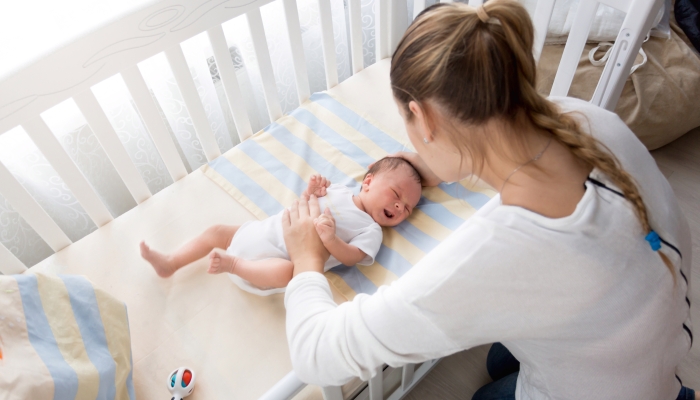
What Will I Need Before Moving My Baby to a Crib?
A safe crib, mattress and crib sheets.
Ensure you have your crib ready for safe sleeping to lower the risk of sudden infant death syndrome (SIDS). This means choosing a crib that meets the current safety standards for sleep.
The crib should be empty, aside from a firm mattress and tight-fitting sheet. Remove any loose blankets, stuffed animals, bumper pads, or extra pillows.
If you are planning to travel with your baby, you’ll also need to choose a portable crib.
Decide where to put your crib.
AAP Guidance recommends that babies sleep in the same room as their parents for a year, but at least for the first six months. You might find you are unable to fit a crib in your bedroom. If they have outgrown their bassinet, you could consider using a mini pack ‘n’ play or bedside sleeper.
Putting the new crib in the same spot as the bassinet can make the transition easier for your baby. If you are using the crib in the baby’s room, remember to place it away from any hazards. You will also need to use a baby monitor if you won’t be sleeping in the room with them.
Tips for a Smooth Crib Transition
As parents, we all want to see our baby sleeping peacefully. This can be difficult when we try to transition our baby into a new sleeping space, but there are ways to make this an easier process.
Early exposure to the crib.
We can’t expect all babies to start sleeping in a new space without complaint when they are used to sleeping in a bassinet. Familiarize your baby with the crib early on so it is a space that they are used to. This doesn’t have to be with an aim to fall asleep—it could be that they spend some tummy time in the crib or watch a mobile from their crib during the day.
Take it slow.
Transition gradually to ease them into the idea that this is their new sleeping space. You could start with one nap a day in the crib before building it up to a few nights a week. You may need to build this up across several weeks before you notice your baby’s sleep in the crib improves.
Keep the rest of the routine the same.
Keep as much of your normal bedtime routine as you can to help your baby sleep in their new location. This will make the transition to a crib easier as changing too many things at once can be confusing for babies.
For example, if you always sing the same lullaby, use a white noise machine or have a set bedtime, keep these things consistent so only the sleep space changes.
Stay close.
Consider having the baby sleeping in the same room as you, especially at first. It can make things easier if they don’t have to get used to a different room as well as the new crib. Room-sharing can also help babies to feel more secure when falling asleep.
You may also have to sleep in the baby’s room for a little while to get them comfortable with a new sleeping environment. Introduce baby monitors once they are able to sleep in their own room to make sure you can still respond to their needs.
Ensure the crib is comfortable.
It’s important that wherever your baby sleeps, they are cozy and comfortable. Make sure the room’s temperature and the sleep clothes or sleep sack you pick keep your baby warm enough to sleep comfortably. If you can, make the crib feel similar to their bassinet by using the same sheets with their familiar smell. Check out these tips if your baby won’t stay in their crib at night.
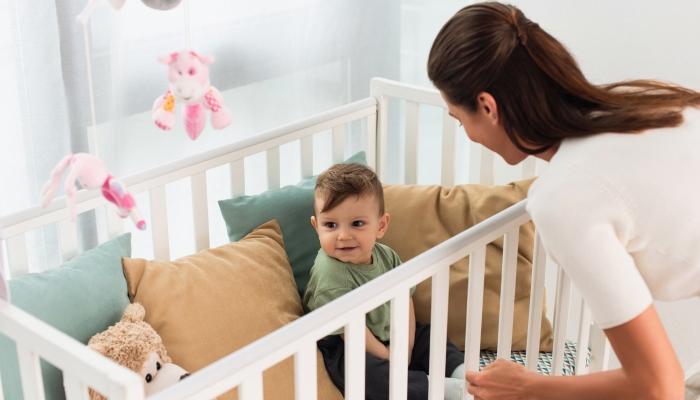
FAQs
Is It Safe to Put a Newborn in a Crib?
Yes! You can use a crib for your newborn, provided that it complies with the safety standards from the U.S. Consumer Product Safety Commission. Many parents choose bassinets or bedside sleepers for a newborn to save space, as they are recommended to room share for at least the first six months. Cribs also take up far more space and are far less portable, but are perfectly safe to use from birth!
How Long Can a Baby Sleep in a Crib?
Similarly to the bassinet, there is not a set age for how long your baby should sleep in their crib. It will depend on many things such as how active they are, their size and how ready they seem for the change. Most children will be ready to make the switch between 18 months to three years old. Try to pick a crib that has room for your older baby to grow, and remember to keep an eye on when to lower the crib mattress.
Can a Baby Get SIDS From Sleeping in a Crib?
Unfortunately, your baby is still at risk of Sudden Infant Death Syndrome (SIDS) in a crib. The APP gives clear recommendations for parents to follow to reduce the risk of SIDS. The recommendations include: putting your baby to sleep on their back, keeping the crib empty, and sharing a room for at least six months.
My Baby Only Wants to Sleep in My Arms, How Can I Settle Them Into Their Bassinet or Crib?
A common concern for parents is how to get their baby to sleep without being held. It’s natural for babies to crave closeness and connection with their parents. But you may want to find ways for them to be comfortable sleeping independently so that you can get some rest too! Use gentle strategies to encourage sleep in a crib, such as forming a consistent bedtime routine and sleep associations.
We Have Been Co-sleeping – Can I Still Transition My Baby to a Crib?
You may find that your baby’s transition from bed-sharing to a crib is more difficult than from a bassinet, but it’s certainly not impossible! The key is to make the transition even slower. Start with some awake time in the crib to familiarize them with it before trying one of their naps in the crib. Build this up gradually and don’t be tempted to rush things—the slower you take it, the more likely your baby will be to welcome the change.
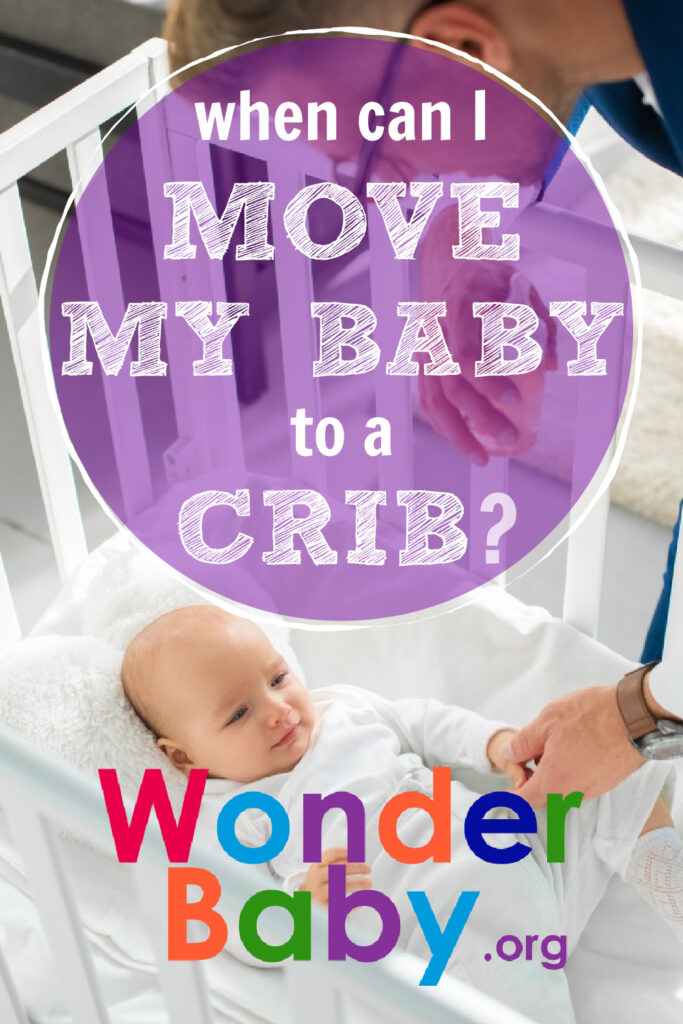
The information WonderBaby provides is not intended to be, and does not constitute, medical or other health advice or diagnosis and should not be used as such. Always consult with a qualified medical professional about your specific circumstances.
Related Posts
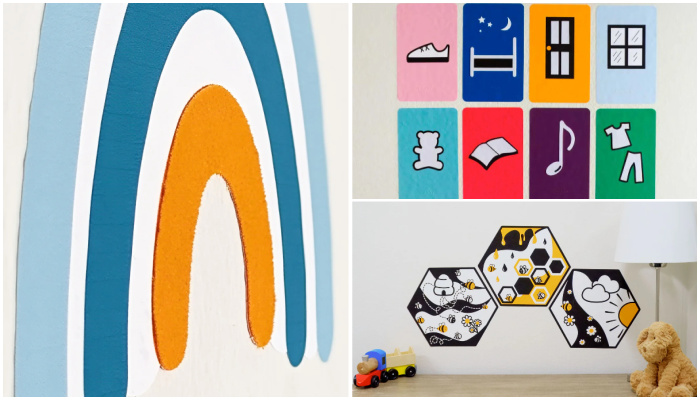
Parenting
Sensory Wall Art: 5 Tips to Create a Room Your Blind or Low-Vision Child Will Love
Even if your child can’t see their surroundings, personalizing and decorating their room with thoughtful, sensory-friendly design can make a big difference in their confidence, independence, and joy.
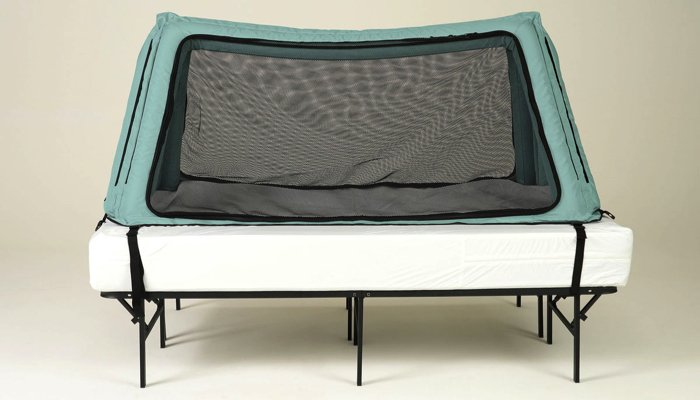
Sleep, Special Needs
Safe Place Bedding Travel Bed Review
Traveling with a special needs child can be stressful! Having a safe, durable, and easy to use travel bed can make traveling so much easier!
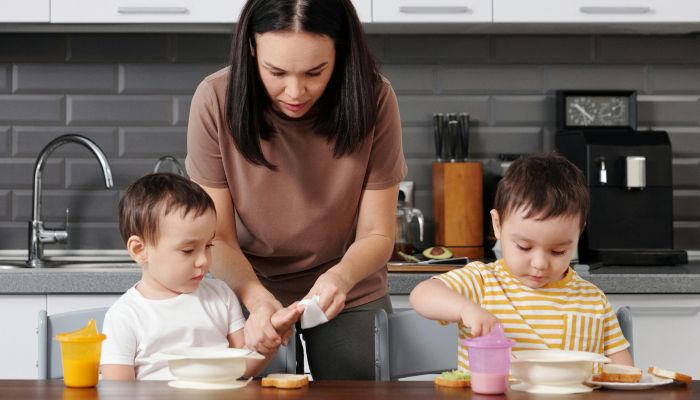
Parenting
4 Tips to Manage Twins Alone as a Single Parent
Taking care of twins alone as a single parent can feel overwhelming. Learn practical ways to help lighten the load.